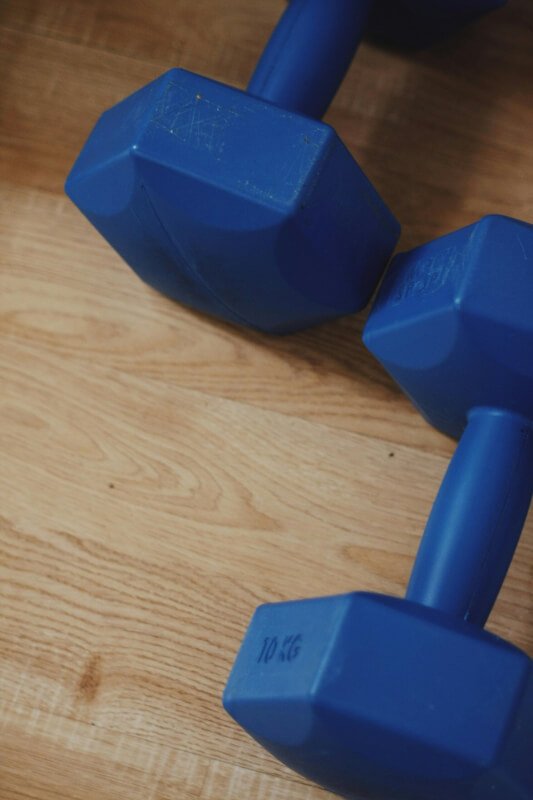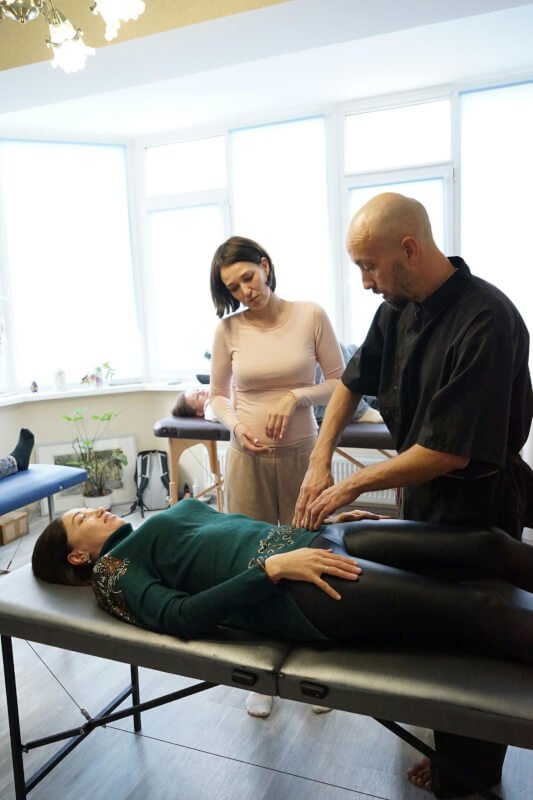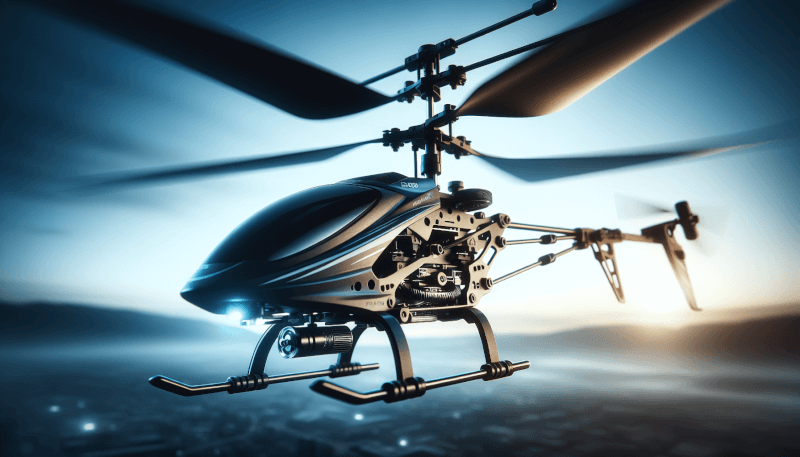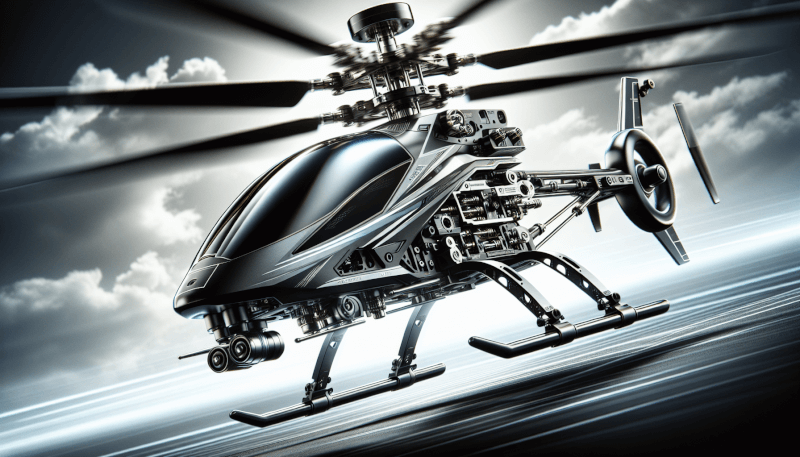Are you ready to take your RC helicopter flying skills to new heights? Look no further than “The Ultimate Guide to RC Helicopter Flight Training.” In this comprehensive guide, you will find all the tips, techniques, and resources you need to become a master of the skies. Whether you’re a beginner looking to learn the basics or an experienced pilot aiming for advanced maneuvers, this guide has you covered. Get ready to soar as you unlock the secrets to smooth takeoffs, precision landings, and jaw-dropping aerobatics. Get your RC helicopter ready, because an exhilarating flight training journey awaits you!

Choosing the Right RC Helicopter
When it comes to choosing the right RC helicopter, it’s important to consider your skill level. If you’re a beginner, you’ll want to start with a helicopter that’s designed for beginners. These helicopters usually have a more stable flight and are easier to control. On the other hand, if you have more experience, you may want to opt for a more advanced helicopter that offers more agility and maneuverability.
Once you’ve determined your skill level, it’s time to decide on the type of RC helicopter you want. There are different types available, such as coaxial, fixed-pitch, and collective-pitch helicopters. Coaxial helicopters are easier to control but lack the maneuverability of other types. Fixed-pitch helicopters offer a good balance between stability and maneuverability. Collective-pitch helicopters are the most advanced and provide the most agility but require more skill to fly.
To make an informed decision, it’s crucial to research different brands and models of RC helicopters. Take the time to read reviews and gather information about the build quality, durability, and customer support that each brand offers. You’ll also want to consider the availability of spare parts and upgrades for the specific model you’re interested in. By doing your research, you can ensure that you choose a reliable and high-quality RC helicopter that suits your needs.
Understanding Components and Controls
To become a skilled RC helicopter pilot, you need to have a good understanding of the components and controls of a helicopter.
Start by learning the anatomy of an RC helicopter. This includes familiarizing yourself with the main components such as the main rotor, tail rotor, landing gear, and fuselage. Understanding how these components work together is essential for controlling the helicopter during flight.
Next, familiarize yourself with the transmitter, which is the remote control used to fly the RC helicopter. Learn about the different controls and switches and how they relate to the helicopter’s movements. Practice controlling the throttle, cyclic, and collective controls to gain a better understanding of how they affect the helicopter’s flight.
Lastly, it’s important to understand the role of servos and gyros in an RC helicopter. Servos are small motors that control the movement of various parts of the helicopter, such as the rotor blades and tail rotor. Gyros help stabilize the helicopter by automatically adjusting the controls to counteract any unwanted movements. By understanding how servos and gyros work, you can make adjustments and fine-tune your helicopter’s performance.
Mastering Basic Flight Maneuvers
Once you have a good grasp of the components and controls, it’s time to start learning and practicing basic flight maneuvers. These maneuvers are the foundation of your flying skills and will allow you to progress to more advanced techniques.
Start by practicing hovering, which involves maintaining a stable position in mid-air. This maneuver requires precise control of the throttle, cyclic, and collective controls. Focus on keeping the helicopter steady and balanced as you hover at different heights.
Next, learn to take off and land safely. Practice lifting the helicopter off the ground smoothly and landing it softly and controlled. Pay attention to your throttle inputs and make adjustments to ensure a stable takeoff and landing.
Once you’re comfortable with hovering and takeoff/landing, it’s time to develop control over pitch, roll, and yaw. Pitch refers to moving the helicopter forward or backward, roll involves tilting the helicopter side to side, and yaw controls the helicopter’s direction. Practice these movements individually and then combine them to perform coordinated flight maneuvers.
Getting to Know Flight Modes
As you progress in your RC helicopter flying, you’ll come across different flight modes that offer varying levels of control and maneuverability. Understanding these flight modes will allow you to explore new challenges and capabilities.
Stability mode is the mode most commonly used by beginners. It offers a stable flight experience with limited maneuverability. The helicopter will automatically self-level when the controls are released, making it easier to fly and maintain control.
For those seeking a more exciting flying experience, 3D acrobatic mode is the way to go. This mode allows for advanced aerobatic maneuvers such as flips, rolls, and inverted flight. It requires more skill and experience to control the helicopter in this mode, but it can lead to thrilling and impressive flights.
Some RC helicopters also come equipped with GPS and autopilot features, allowing the helicopter to autonomously navigate and perform specific tasks. These features can be helpful for aerial photography or long-range flights. Take the time to explore and experiment with these features once you’re comfortable with the basic flight maneuvers.

Safety Precautions for RC Helicopter Flying
When flying RC helicopters, safety should always be a top priority. By following some key safety precautions, you can ensure a safe and enjoyable flying experience.
First and foremost, choose the right flying location. Find an open area away from crowded places and obstacles such as trees and power lines. Ideally, look for a designated RC flying field that provides a safe and controlled environment for flying.
It’s also important to familiarize yourself with local regulations and laws regarding RC helicopter flying. Some areas may have restrictions on where and when you can fly, so be sure to abide by these rules to avoid any legal issues. Additionally, consider joining a local RC helicopter club to stay updated on any local regulations and to connect with other enthusiasts.
Regular maintenance is crucial for keeping your RC helicopter in optimal condition. Inspect your helicopter before each flight to ensure that all components are in good working order. Check for any loose screws, damaged parts, or signs of wear and tear. Always follow the manufacturer’s recommendations for maintenance and servicing to avoid any surprises during flight.
Flight Training Techniques
To improve your flying skills, it’s essential to dedicate time to training and practice. Here are some flight training techniques to help you progress as a RC helicopter pilot:
Start with solo practice sessions. Find a quiet and open area where you can focus on honing your flying skills. Set specific goals for each session, whether it’s mastering a particular maneuver or improving overall control. Use this time to practice different flight modes, try out new techniques, and build muscle memory.
Consider joining a local RC helicopter club. These clubs provide opportunities to fly with experienced pilots, learn from their expertise, and receive guidance and support. They often organize group flying sessions, competitions, and social events, allowing you to connect with other pilots who share your passion.
Attending workshops and training events can also be beneficial. These events offer structured training programs led by experienced instructors. You’ll learn advanced techniques, receive personalized feedback, and have access to simulators and other training resources.
By combining solo practice, club participation, and workshop attendance, you can develop your skills at a steady pace and immerse yourself in the RC helicopter community.

Troubleshooting Common Issues
As with any hobby, RC helicopter flying can come with its fair share of troubleshooting. Here are some common issues you may encounter and tips on how to address them:
Calibration problems can occur if the controls on your RC helicopter and transmitter are not properly aligned. If you notice the helicopter not responding as expected or behaving erratically, check the calibration. Recalibrate the controls according to the manufacturer’s instructions to restore proper functionality.
Battery and power issues can also affect your flying experience. Keep an eye on your battery levels and make sure they are adequately charged before each flight. Be aware of the flight time limitations of your specific helicopter and have spare batteries on hand if needed. If your helicopter experiences sudden power loss or erratic behavior, it may be time to replace the batteries.
Signal interference can disrupt your control over the RC helicopter. Radio frequency interference from other nearby devices or structures can affect the signal transmission between the transmitter and the helicopter. Try changing your flying location to reduce interference or adjust the position of the transmitter’s antenna for a stronger signal.
If you encounter any other issues or have difficulties troubleshooting, don’t hesitate to reach out to the manufacturer’s customer support or consult with experienced pilots in your RC helicopter community. They can provide valuable insights and guidance in resolving any problems you may encounter.
Advanced Flight Techniques
Once you’ve mastered the basic flight maneuvers and built confidence in your flying skills, it’s time to push the boundaries and explore advanced flight techniques.
Performing loops and rolls is a thrilling maneuver that tests your control and coordination. Start by practicing loops, which involve flying the helicopter in a circular path while maintaining a constant altitude. Once you’re comfortable with loops, progress to rolls, which require the helicopter to rotate along its longitudinal axis. Mastering these maneuvers will add excitement and variety to your flights.
Inverted flying is another challenging technique to conquer. It involves flying the helicopter upside-down while maintaining control and stability. This maneuver requires precise control inputs and a good understanding of the helicopter’s dynamics. Start by practicing inverted flight at a safe altitude until you feel comfortable and confident in this inverted orientation.
Executing precision maneuvers is a true test of skill and precision. These maneuvers involve flying the helicopter with extreme accuracy, maintaining a specific position or performing intricate patterns. Precision maneuvers require a deep understanding of the controls, coordination, and spatial awareness. Dedicate time to practice and refine these maneuvers to showcase your piloting abilities.

Choosing the Right Accessories and Upgrades
As you become more experienced and want to enhance your RC helicopter’s performance, it’s worth considering various accessories and upgrades.
Upgraded parts can significantly improve your helicopter’s flight characteristics, durability, and overall performance. Look for parts such as upgraded rotor blades, tail rotors, and landing gear that are compatible with your specific model. These upgrades can provide better stability, increased agility, and improved responsiveness.
Investing in a quality transmitter and receiver is essential for precise control and reliable signal transmission. Look for models with advanced features, such as programmable settings, multiple flight modes, and high-quality components. A robust transmitter and receiver setup will ensure a smooth and accurate flying experience.
Optional accessories like cameras or LED lights can add a new dimension to your flying adventures. Installing a camera on your helicopter allows you to capture stunning aerial footage or even engage in FPV (First Person View) flying. LED lights can enhance visibility during low-light conditions, making it easier to keep track of your helicopter’s orientation.
When considering accessories and upgrades, take into account compatibility with your helicopter model and manufacturer recommendations. Remember that each addition may affect the overall weight, balance, and flight characteristics of your RC helicopter, so consider the impact of each upgrade on the performance and handling.
Tips for Practicing and Progressing
To maximize your flying potential and progress as a RC helicopter pilot, here are some tips to keep in mind:
Set clear goals and objectives for each flying session. Whether it’s mastering a specific maneuver, improving overall control, or preparing for a competition, having clear targets will help you stay focused and motivated.
Use simulators to fine-tune your flying skills. Simulators provide a safe and cost-effective way to practice various flight scenarios and maneuvers. They also allow you to experiment with different settings and flight modes without the risk of damaging your helicopter.
Challenge yourself with new flight maneuvers. As your skills improve, don’t be afraid to push your limits and try new and more complex maneuvers. Embrace the learning process and be patient with yourself as you tackle new challenges.
Remember that progress takes time and practice. Becoming a skilled RC helicopter pilot is a journey that requires dedication and perseverance. Enjoy the process, celebrate small victories, and seek guidance and inspiration from experienced pilots. With time and effort, you’ll continue to grow and excel in the exciting world of RC helicopter flying.

Conclusion
Choosing the right RC helicopter, understanding its components and controls, mastering basic flight maneuvers, and exploring advanced techniques are all part of the journey to becoming a skilled RC helicopter pilot. By following safety precautions, dedicating time to training, troubleshooting common issues, and considering accessories and upgrades, you can enhance your flying experience and take your skills to new heights. Enjoy the thrill and excitement of RC helicopter flying, and embrace the continuous learning and improvement that come with it. Happy flying!


